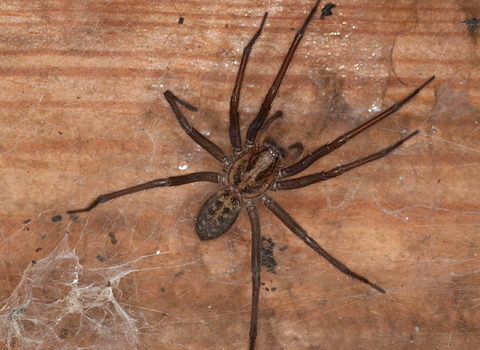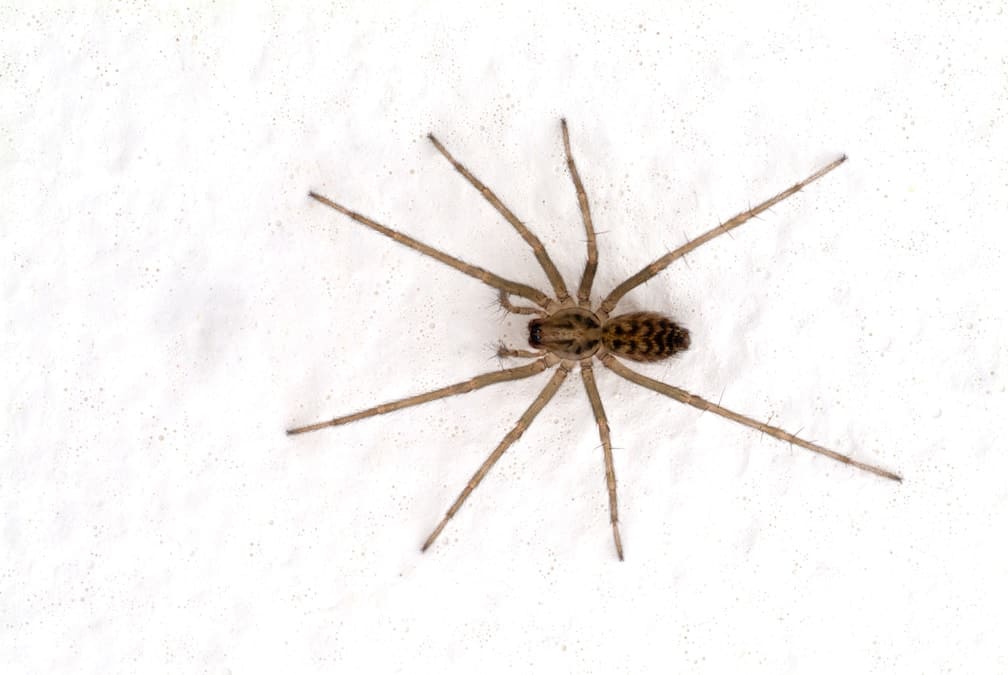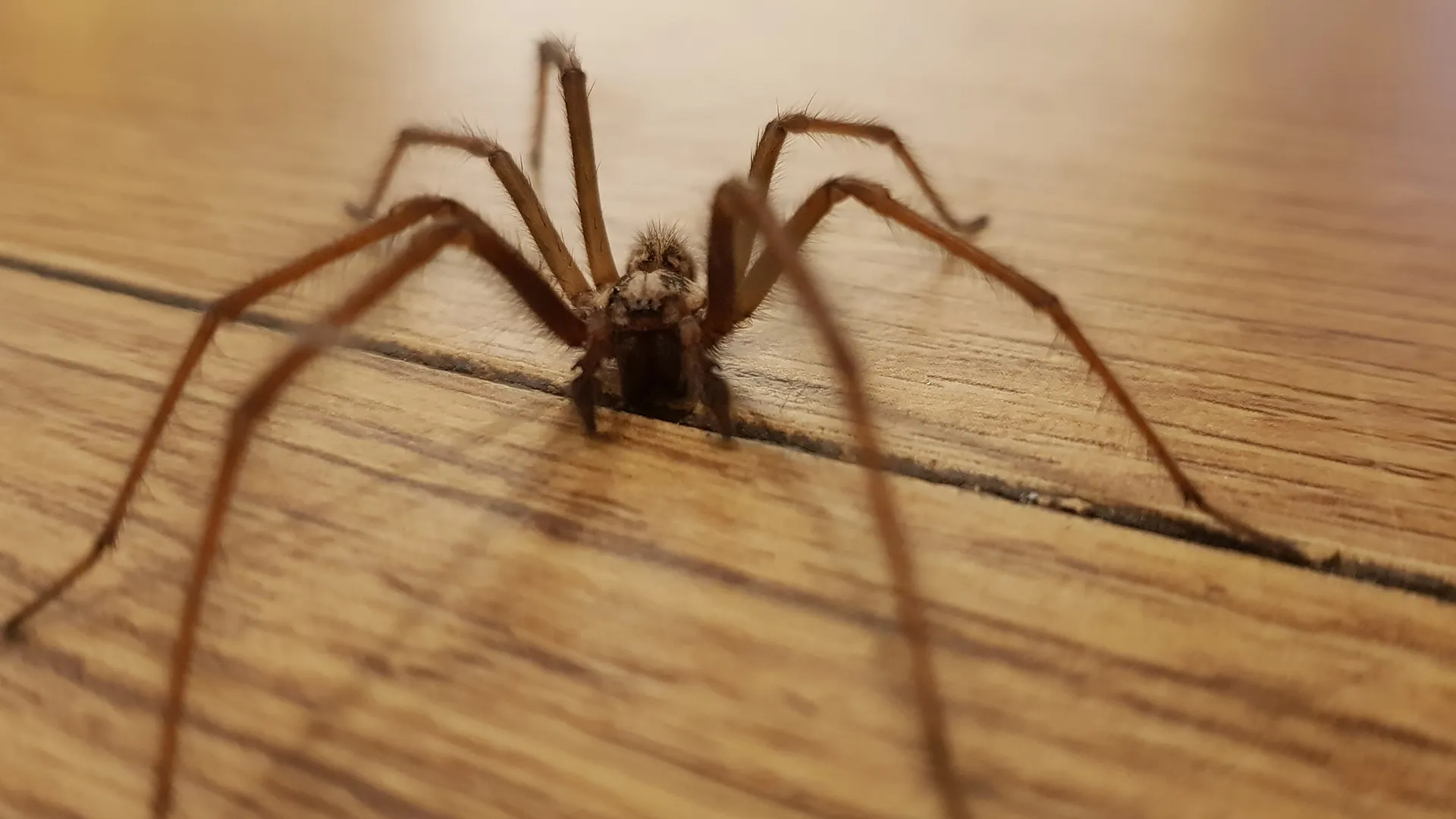Spider Treatments in Florida
Exterminator Services for Cape Coral and North Fort Myers
Florida’s subtropical environment, defined by warm temperatures and moderate to high humidity, sustains an abundance of insect life. Where insects cluster, spiders frequently follow, naturally regulating bug populations. Unfortunately, a surplus of spiders can unsettle homeowners and business operators, particularly if venomous species turn up near living or working areas. If you own property in Cape Coral or manage a building in North Fort Myers, identifying and addressing spider infestations early is crucial. Left unmanaged, even non-venomous spiders can spin webs in inconvenient spots, while certain venomous types (like widow species) pose health risks. This service page covers why spiders flourish in Florida, typical signs of an infestation, and how an expert spider exterminator can implement spider treatments to restore comfort and safety. By intervening promptly, property owners keep arachnid populations in check, preserving a more welcoming indoor and outdoor atmosphere.
Why Spiders Thrive in Florida

- Year-Round Warmth
In colder regions, extended freezing temperatures reduce spider breeding. Florida’s winters remain mild, rarely dropping below freezing for more than short periods. This means spiders experience minimal downtime and can continue feeding and reproducing virtually all year. Coupled with humid summers, the state’s climate offers an extended window for spider activity. - Abundant Insect Prey
Spiders feed primarily on other bugs. Thanks to Florida’s humidity, insect populations remain high, from mosquitoes to flies and gnats. Where insect prey is plentiful, spiders migrate and establish webs or hunting territories. If a building or yard has abundant insects around lights, water features, or moist corners, spider counts often increase. - No Significant Dormancy
In northern climates, harsh winters trigger partial dormancy or mortality in many spider species. Florida’s environment, however, spares them from these stressors. Hence, a few spiders that move indoors or near building foundations can remain active for months on end, leading to incremental population rises if they go unaddressed. - High Humidity and Rainfall
Spiders typically require moisture to keep from dehydrating. Frequent rainfall ensures ample damp corners, from yard debris and mulched gardens to shady nooks around exteriors. Some spiders weave webs in these moist spots to catch insects drawn by moisture, while others find comfortable resting spots inside if humidity remains suitable. - Frequent Building Turnover
Regions like Cape Coral and North Fort Myers experience population changes from seasonal visitors, short-term rentals, or new construction. Spiders can ride in boxes, furniture, or luggage from one location to another. A single unnoticed spider or egg sac can spawn a new colony if conditions remain favorable.
Common Spider Species in Florida
- Orb-Weaver Spiders
Known for their large, circular webs, orb-weavers are often spotted in gardens or across windows, catching flying insects. While their size and bright coloring might intimidate residents, most orb-weavers remain harmless to humans. Nevertheless, encountering multiple webs across doorways or high-traffic zones may prompt web removal for convenience. - Wolf Spiders
These robust, ground-hunting spiders do not construct typical webs. They roam lawns or building interiors at night, hunting insects. Large wolf spiders can alarm homeowners who encounter them unexpectedly, but bites are uncommon unless the spider feels cornered. - Widow Spiders (Black and Brown)
Black widows, bearing the iconic red hourglass on their abdomens, and brown widows, with a lighter hourglass mark, produce potent venom. They spin tangled, strong webs in sheltered spots, such as under outdoor furniture, in garages, or behind cluttered storage. Bites can require medical attention, prompting immediate removal or professional spider treatments when discovered. - House Spiders and Crevice Spiders
Smaller, brownish spiders adapt well indoors, spinning webs in corners, behind furniture, or under countertops. While mostly non-threatening, a buildup of webs leads to an unclean appearance. Their presence signals a broader insect prey presence or potential lack of thorough dusting or vacuuming in certain areas. - Brown Recluse (Rare in Coastal Florida)
Though less common near coasts, occasional sightings of brown recluse spiders might still occur in transported items or older properties. Recognizable by a violin-shaped mark on the thorax, their bites can cause tissue reactions, emphasizing the importance of verifying suspicious brown spiders with professional help if found.
Signs of a Spider Infestation
- Multiple Webs in Corners or Near Windows
A few spider webs outdoors can be normal. However, repeated webs across entrances, heavy webbing inside garages, or webs containing numerous egg sacs in short intervals suggest a larger spider population. Cobweb-laden corners or neglected rooms can harbor hidden spiders and egg sacs. - Venomous Spider Sightings
Spotting a black widow near a child’s play area or discovering brown widows around the patio calls for urgent action. Bites from these spiders, though not always fatal, pose enough risk to justify immediate professional removal or thorough inspection. - Egg Sac Accumulations
Spiders deposit egg sacs in corners or under ledges. Each sac can hold numerous spiderlings. If you see multiple sacs together, or large, balloon-like deposits clinging to webs, the next generation is on the way unless removed. - Spiders in Unusual Places
While noticing a single wolf spider crossing the kitchen at night might be happenstance, encountering multiple large spiders – or a persistent presence in living spaces – indicates the interior environment has become conducive to them, necessitating deeper intervention. - Unsettled Occupants
Some individuals experience significant arachnophobia or worry about potential bites. If occupant concerns escalate, or you frequently remove webs only to see them reappear quickly, consider professional solutions to quell the spider presence altogether.
Potential Dangers and Why Immediate Action Helps
- Venom Risks
Though most Florida spiders do not threaten human safety severely, black or brown widows and possible recluse sightings can have medically serious bites. Reducing these species around human traffic lowers the likelihood of painful or dangerous encounters. - Overabundant Webbing
Even non-venomous orb-weavers can disrupt daily routines if their large webs cross doorways or windows, requiring frequent clearing. High spider counts can deter guests, hamper business reputations, or cause occupant annoyance if left unresolved. - Exacerbated Fear and Anxiety
For those with arachnophobia, noticing multiple spiders or webs can heighten stress. Eliminating or reducing spider activity fosters occupant calm and reclaims living spaces from the mental burden of fear. - Uncontrolled Spider Population
With warm, moist conditions year-round, a spider presence can surge in a short period. Quick intervention at early signs prevents them from laying numerous egg sacs or colonizing hidden areas such as attics, crawl spaces, or basements.

Why Professional Exterminator Solutions Work
- Targeted Species Identification
A spider exterminator determines whether your property faces non-threatening garden spiders or venomous widow species. Each spider type requires different approaches, from outdoor perimeter treatments to safe indoor insecticide placements, ensuring minimal occupant risk. - Insect Population Control
Spiders flourish where insects are abundant. Professionals tackle not only the spiders but also the underlying insect sources, applying integrated pest management strategies that reduce insect prey. Fewer insects translate into fewer spiders, halting the food chain that supports them. - Indoor and Outdoor Treatments
By treating yard edges, removing web hotspots, sealing entry points, and applying interior sprays or dusts in cracks, experts create thorough coverage. This synergy addresses spiders nesting in eaves, corners, or hidden voids. Proper application also prevents occupant overexposure to chemicals. - De-Webbing and Egg Sac Removal
Physical removal of existing webs and egg sacs disrupts the immediate lifecycle, halting widespread hatching. Combining de-webbing with chemical applications ensures adult spiders cannot easily rebuild or deposit new eggs, reducing the overall population swiftly. - Prevention and Follow-Ups
After extermination, an exterminator offers insights on yard maintenance, sealing windows or doors, adjusting lighting, or controlling insect prey. Scheduling re-checks confirms no newly emerged spiders remain, fostering long-term stability.
Methods an Exterminator Might Use
- Inspection and Analysis
The initial step involves examining indoor rooms, garages, basements, or yard edges to spot web clusters, venomous spider sightings, or large insect presence. Identifying any water or insect attractants like damp corners or bright outdoor lighting also shapes the plan. - Outdoor Perimeter Sprays
Applying insecticides around property foundations, windowsills, or yard boundaries can repel or kill spiders hunting near these zones. Sometimes switching from standard white bulbs to yellow “bug lights” also lowers insect presence at night, thereby reducing spider feeding grounds. - Indoor Sprays or Dust Applications
When webs are discovered indoors, residual sprays or dust placed in cracks, baseboards, or behind appliances kill spiders crossing treated surfaces. Handling known hideouts—like closet corners or ceiling junctions—blocks new webs from forming. - Physical Removal
De-webbing with a vacuum or brush eliminates current webs and attached egg sacs. This direct approach significantly cuts future spider populations, especially if repeated every few days until no webs reappear. - Focus on Prey Control
Because controlling insect prey is central to limiting spider populations, exterminators may recommend roach or ant treatments if those pests appear rampant. Less prey equates to fewer reasons for spiders to occupy the space.

Serving Cape Coral and North Fort Myers
Cape Coral: Known for miles of canals and vibrant local living, Cape Coral experiences consistent occupant turnover and recreational spaces that can draw insects. Damp yard corners or older houses lacking thorough sealing often prove conducive to spider nesting. Swift occupant awareness plus strategic pest solutions ensure relaxing canal-side life without the stress of abundant webs.
North Fort Myers: A quieter area blending rural edges with suburban pockets, North Fort Myers sees a variety of older houses, sometimes featuring cracks or eaves that let spiders slip inside. Scheduling occasional property sweeps or collaborating with neighbors on insect or weed control lessens spider intrusions, particularly around outbuildings or waterfront edges.
Why Our Spider Treatments Excel
- Florida-Tailored Strategies
Because southwestern Florida lacks harsh winters that curb spiders, solutions address year-round breeding. We combine occupant education—storing wood piles away from walls, controlling insects, trimming yard vegetation near foundations—with targeted chemical or non-chemical methods to reduce spider harborage. - Precision and Safety
Rather than saturating entire zones, we locate webs and potential hideouts for direct spot treatments. This approach protects beneficial insects while confronting spiders that take refuge in corners, eaves, or behind large furniture. Occupants can continue routines soon after application, often with minimal inconvenience. - Long-Term Prevention
Through occupant guidance—like adjusting outdoor lighting to minimize insect swarms, sealing window frames, or removing yard debris—we hamper spider re-entry. Since many Florida spiders remain active year-round, an integrated approach fosters durable relief from repeated web rebuilding. - Follow-Up Checks
Because egg sacs can hatch after initial removal, scheduling a re-check or ongoing monitoring ensures newly emerged spiderlings do not re-establish. If occupant sightings persist or new webs appear, a secondary treatment can quell them before expansions resume.
Next Steps
Seeing webs repeatedly forming in doorways, concerned about widow spiders near children’s play areas, or noticing multiple spiders along walls at night? Contact us to learn more or schedule your service. Our spider treatments in Cape Coral and North Fort Myers tackle infestations at the source—combining direct web removal, insect control, and occupant instructions for a spider-limited environment. Partner with an experienced spider exterminator to reclaim your home or business from unwanted arachnids, letting you enjoy Florida’s mild climate free of unnerving eight-legged surprises.
Preserving a Spider-Free Florida Lifestyle
Once an infestation is eliminated, small changes help ward off future spider populations:
- Minimize Indoor Insects: Use roach or ant control if these pests are prevalent, as spiders often follow abundant prey.
- Check Outdoor Lighting: Switch standard bulbs to yellow “bug lights,” attracting fewer insects and, in turn, fewer spiders.
- Regularly De-Web: Frequent sweeping or vacuuming of corners, eaves, or under furniture disrupts spider attempts to re-spin webs unnoticed.
- Patch Cracks and Gaps: Examine window sills, door frames, and baseboards for minor openings. Apply caulk or weatherstripping to block entry.
- Yard Maintenance: Keep grass trimmed, remove leaf litter, and store wood or clutter away from foundations. Less yard debris means fewer insect breeding grounds and, therefore, fewer spiders.
With these tactics and quick professional solutions if spiders resurface, southwestern Florida residents near Cape Coral or North Fort Myers sustain a calm living environment. By blending occupant diligence, methodical treatments, and routine checks, you minimize spider concerns year-round, capitalizing on Florida’s mild winters and vibrant outdoor opportunities without worry of spider webs or venomous species encroaching on daily life.
